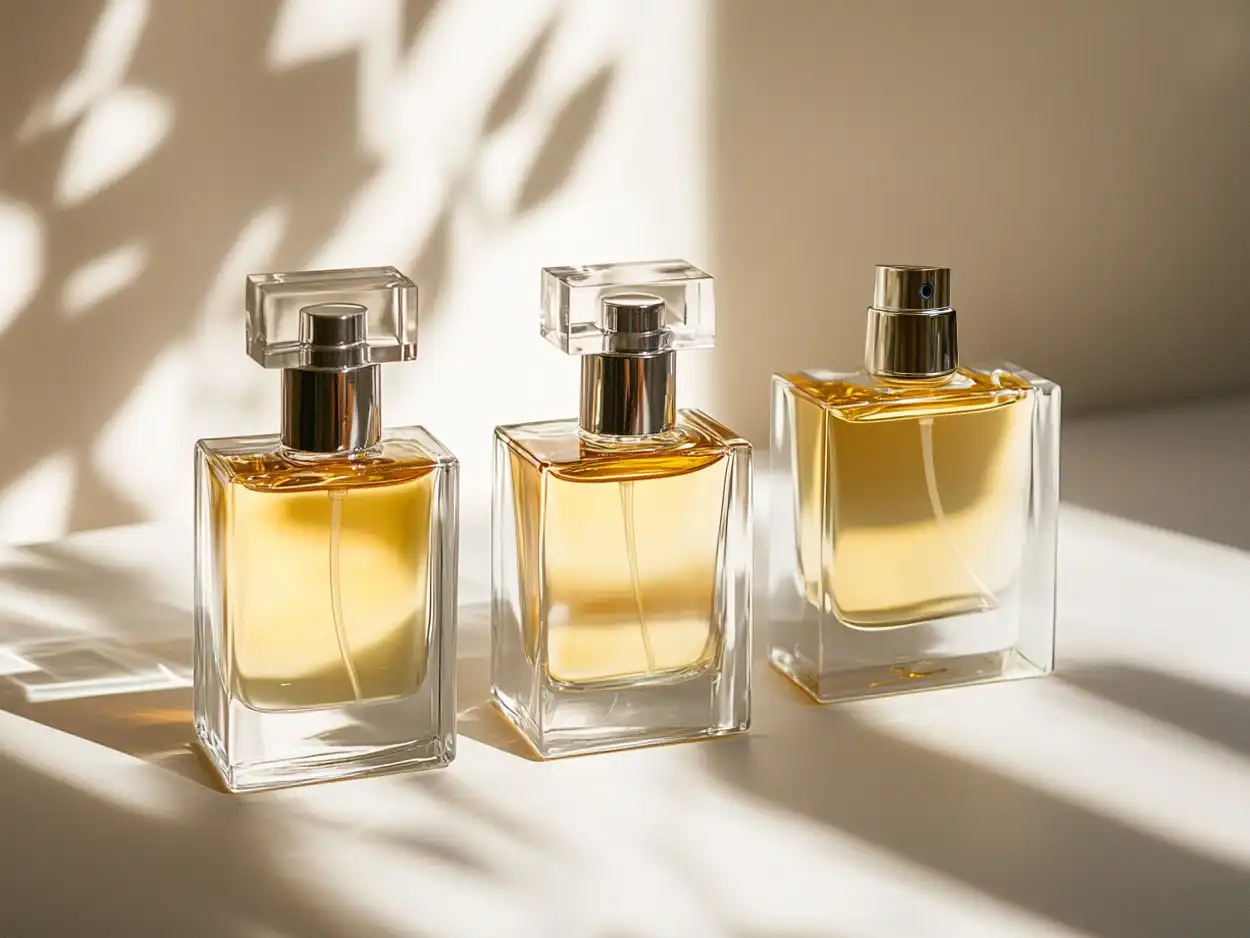Perfume dilution is a crucial aspect of fragrance creation that determines how a scent performs on the skin. Understanding the various concentrations, from Eau de Cologne to Parfum, not only helps consumers make informed choices but also reveals the artistry behind each fragrance. These variations affect the scent’s intensity, longevity, and projection, allowing fragrance enthusiasts to curate collections suited to their preferences and lifestyles.
Types of Perfume Concentrations
The perfume industry categorizes fragrances based on their concentration of aromatic compounds. These categories, ranging from the lightest to the most intense, each offer a unique olfactory experience.
Eau de Cologne (EdC)
Eau de Cologne, often abbreviated as EdC, represents the most diluted form of perfume widely available in the fragrance market. With a concentration of aromatic compounds typically ranging from 2% to 4%, EdC offers a light, refreshing scent that’s ideal for hot summer days or casual wear. The lower concentration results in a fragrance that tends to evaporate quickly, usually lasting only about two hours on the skin. This characteristic makes EdC an excellent choice for those who prefer subtle fragrances or enjoy the ritual of reapplying throughout the day.
Historically originating in Cologne, Germany, in the 18th century, EdC often features citrus notes prominently, giving it a crisp, invigorating quality. Despite its lower concentration, EdC serves several unique purposes in the fragrance world. It can be an excellent choice for layering fragrances, allowing wearers to create custom scent combinations. Additionally, those with sensitive skin who find stronger perfumes overwhelming often appreciate the gentler nature of EdC. Its fleeting quality also makes it suitable for environments where a more subtle scent is appropriate, such as office settings or warm weather conditions.
Eau de Toilette (EdT)
Moving up the concentration scale, we find Eau de Toilette (EdT). With aromatic compounds typically ranging from 5% to 15%, EdT strikes a balance between the lightness of EdC and the intensity of stronger perfumes. This concentration is arguably the most popular in the fragrance market, offering a noticeable scent that typically lasts for about three to five hours.
EdT is versatile enough for daily wear, suitable for both office environments and casual outings. Its moderate sillage (the trail left by a fragrance) makes it noticeable without being overpowering. Many classic designer fragrances are available in EdT concentration, making it accessible to a wide range of consumers.
The term “toilette” in Eau de Toilette comes from the French “faire sa toilette,” which refers to the ritual of getting ready. Historically, EdT was used as a light fragrance applied after grooming.
Eau de Parfum (EdP)
Eau de Parfum (EdP) represents a step up in intensity and longevity. With a concentration of aromatic compounds typically ranging from 15% to 20%, EdP offers a rich, long-lasting fragrance experience. On average, an EdP can last anywhere from six to eight hours on the skin, making it an excellent choice for all-day wear or special occasions.
The higher concentration of EdP allows for a more complex fragrance profile, with clearly discernible top, heart, and base notes. This complexity means that an EdP will evolve more noticeably on the skin over time, offering a dynamic scent experience. The increased sillage of EdP makes it more noticeable to others, which can be desirable for those who want their fragrance to make a statement.
EdP is often considered the best value for money in terms of fragrance concentration, as it offers significant longevity and intensity without the premium price tag of pure parfum.
Parfum/Extrait de Parfum
At the pinnacle of fragrance concentration sits Parfum, also known as Extrait de Parfum or pure perfume. With aromatic compound concentrations ranging from 20% to 40% (and sometimes even higher), Parfum offers the most intense and long-lasting fragrance experience. A single application can last up to 24 hours on the skin, with the scent evolving subtly throughout the day.
Parfum is the most expensive form of fragrance (currently, until the fragrance industry cooks up another concentration – we’re already starting to see “Elixir” now) due to its high concentration of precious aromatic compounds. It’s typically applied sparingly, often by dabbing rather than spraying, and is reserved for special occasions or for those who truly appreciate the art of perfumery. The high concentration allows for the fullest expression of a fragrance’s composition, revealing nuances that might be less noticeable in more diluted forms.
Despite its intensity, Parfum often sits closer to the skin than other concentrations, creating an intimate scent experience. This makes it an excellent choice for those who want a long-lasting fragrance that doesn’t overwhelm their surroundings.
The Perfume Manufacturing Process
The creation of perfume is a meticulous blend of art and science. At its core, perfume consists of fragrant oils, aroma compounds, fixatives, and a solvent—typically alcohol. The process begins with a perfumer, or “nose,” who creates a precise formula of aromatic ingredients, arranging them into top, middle, and base notes.
Once finalized, the formula moves to compounding, where raw materials are mixed with extreme precision. The concentrated fragrance oil then undergoes dilution with perfumer’s alcohol—a high-purity, odorless ethanol. This alcohol plays crucial roles in dilution, dispersion, evaporation, and preservation of the fragrance.
After dilution, the perfume undergoes maturation and maceration, often lasting several weeks or months. This period allows ingredients to blend fully, developing the fragrance’s full character. The mixture is then filtered to ensure clarity and stability.
Quality control is rigorous throughout, with olfactory tests and chemical analyses verifying composition, stability, and regulatory compliance. The final step involves carefully bottling and packaging the perfume, considering both aesthetics and preservation.
Throughout this process, the level of dilution remains key in determining the final product’s character, creating the distinct profiles of EdC, EdT, EdP, and Parfum. This intricate balance of concentration and alcohol creates unique olfactory experiences for each fragrance type.
Factors Influencing Dilution Choices
So why not just make the perfume the strongest it can be from the get-go? Why would there be various “watered-down” versions to pick from? Well, the choice of perfume dilution isn’t arbitrary; it’s influenced by various factors that affect both manufacturers and consumers.
Cost plays a significant role, as higher concentrations require more fragrance oils, driving up production expenses and retail prices. Market demand also shapes dilution choices, with some regions preferring lighter scents while others favor more intense fragrances.
Fragrance character is another crucial factor. Some scent compositions shine in lower concentrations, while others require higher concentrations to fully express their complexity. The intended use of the fragrance—whether for daily wear, special occasions, or specific climates—also influences dilution decisions.
Lastly, regulatory compliance affects dilution choices. Different markets have varying regulations on fragrance concentrations and ingredient usage, prompting manufacturers to adjust their formulations accordingly.
How to Choose the Right Dilution for You
Selecting the ideal perfume dilution is a personal journey that involves understanding one’s preferences, lifestyle, and the unique characteristics of different fragrance concentrations. The first step is to consider personal scent preferences – whether one enjoys a subtle, close-to-the-skin fragrance or a more noticeable sillage. Those who prefer light, fresh scents might lean towards Eau de Cologne or Eau de Toilette, while those who enjoy richer, more complex fragrances might opt for Eau de Parfum or Parfum.
Lifestyle and occasions play a crucial role in this decision. For everyday use in office settings or casual outings, Eau de Toilette often strikes a good balance. Eau de Parfum or Parfum might be more suitable for evening events or special occasions. Climate and season should also be factored in, as lighter concentrations can be more refreshing in hot weather, while higher concentrations may be preferred in colder months.
Skin type and personal body chemistry significantly influence how a fragrance performs. Those with dry skin might find higher concentrations more long-lasting, while those with oily skin might prefer lighter options. It’s essential to test fragrances on the skin rather than relying solely on paper strips, as the interaction between skin and scent can vary greatly between individuals.
Budget considerations are also important. While higher concentrations are generally more expensive, they often offer better value in terms of longevity and intensity. However, if frequent reapplication is desired, a less expensive, lower concentration might be more economical.
Experimentation is key in finding the right dilution. Many fragrance enthusiasts enjoy owning different concentrations of the same scent, using them for different purposes or layering them for a customized experience. To test effectively, apply the fragrance to clean, bare skin and observe how it evolves over several hours in various conditions.
Seeking advice from fragrance specialists can provide valuable insights, and they can often provide samples for thorough testing. However, the most important factor is personal enjoyment. The right dilution is ultimately the one that makes the wearer feel confident and comfortable, regardless of technical specifications.

